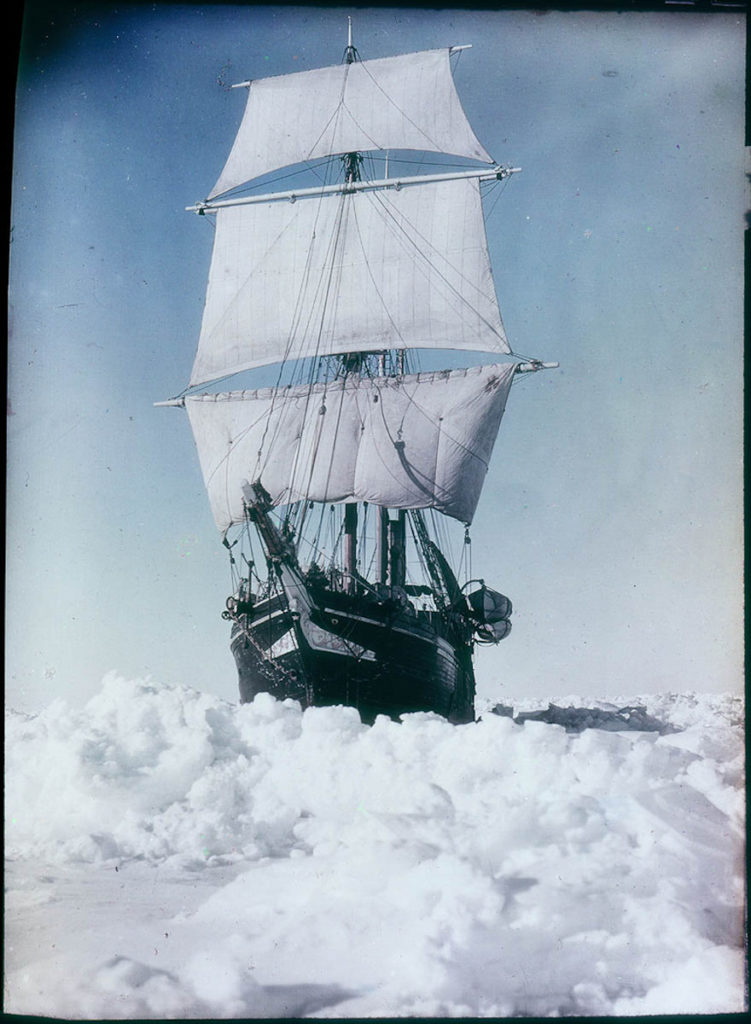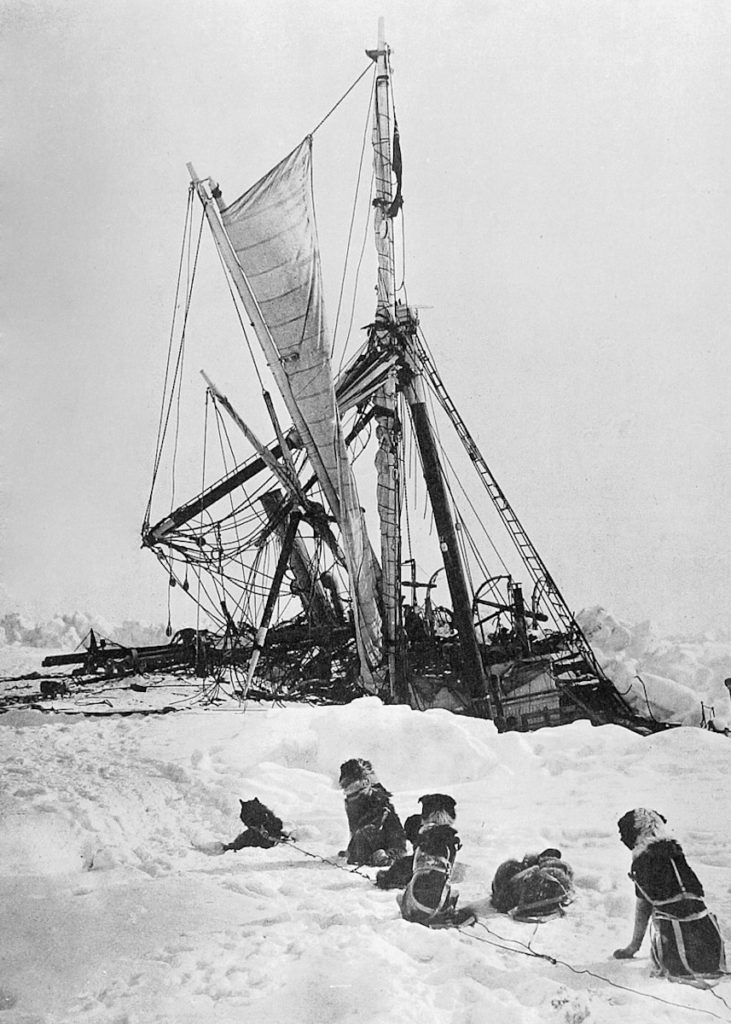The Endurance22 expedition has arrived in Antarctica’s Weddell Sea to look for Ernest Shackleton’s ship, Endurance. The contemporary adventure is also important. The difficulties in locating the ship are formidable, as it is thought to be submerged beneath ice in water 3,000 metres deep. Underwater robots are the only way to reach such depths.
The Endurance22 expedition aims to be the first to locate and survey Sir Ernest Shackleton’s lost ship, which sank in Antarctica’s Weddell Sea in 1915, using underwater robots, helicopters, and other cutting-edge technology. This is one of the world’s coldest, harshest, and most isolated locations.
Endurance was a three-masted barquentine that sailed to Antarctica with Sir Ernest Shackleton and a crew of 27 men and one cat during the 1914–1917 Imperial Trans-Antarctic Expedition. She set sail from Sandefjord in Norway in 1912, but three years later she was crushed by pack ice and sank in the Weddell Sea off the coast of Antarctica. Her entire crew survived.

Endurance was finished on December 17, 1912, at the Framns shipyard in Sandefjord, Norway. Her hull appeared to be that of any other vessel of comparable size from the outside, but it was not. She was built for polar conditions and had a very strong construction. Her keel members were four pieces of solid oak stacked one on top of the other, adding up to a thickness of 85 inches (2,200 mm), while its sides were between 30 inches (760 mm) and 18 inches (460 mm) thick, with twice as many frames as normal and double the thickness of the frames. She was constructed from planks of oak and Norwegian fir up to 30 inches (760 mm) thick, which were sheathed in greenheart, an extremely strong and heavy wood. She was not intended to be frozen into heavy pack ice because of her great inherent strength in her hull to resist collision with ice floes and to break through pack ice by ramming and crushing.
Polaris was the ship’s initial name when it was launched on December 17, 1912. (eponymous with Polaris, the North Star). She was 144 feet (44 metres) long, had a beam of 25 feet (7.6 metres), and weighed 348 tonnes gross. Her original purpose as an ice-capable steam yacht was to provide luxurious accommodation for small tourist and hunting parties in the Arctic. She had ten passenger cabins when she was launched, a large dining saloon and galley (with room for two cooks), a smoking room, a darkroom for passengers to develop photographs, electric lighting, and even a small bathroom.
Endurance sailed from Buenos Aires to her final port of call, the whaling station at Grytviken on the island of South Georgia, where she arrived on November 5, 1914. On December 5, 1914, she sailed from Grytviken for the Weddell Sea’s southern reaches. Endurance hit polar pack ice two days after leaving South Georgia, slowing her progress to a crawl. Endurance worked its way through the pack for weeks, averaging less than 30 miles (48 km) per day. Endurance was within 200 miles (320 km) of her destination, Vahsel Bay, by the 15th of January 1915. Heavy pack ice was spotted the next morning, and a gale developed in the afternoon. Endurance sought refuge under the lee of a large grounded iceberg when it became clear that progress could not be made under these conditions. Endurance moved back and forth under the sheltering protection of the berg for the next two days.
On the 18th of January, the gale began to ease, and Endurance raised the topsail while keeping the engine on slow. The pack had vanished. Endurance made slow progress until he ran into the pack again hours later. Endurance entered the pack at 5:00 p.m. after it was decided to move forward and work through it. This ice was unlike anything else they’d seen before, and the ship was soon surrounded by thick but soft brash ice, becoming besieged. The gale intensified and continued to blow from a northerly direction towards land for another six days. The wind had completely compressed the ice in the Weddell Sea against the land by the 24th of January, leaving Endurance icebound as far as the eye could see.
The Endurance battled the ice for months and then the temperature rose to 42 °F (6 °C) in October, and the ice began to crack. On 14 October, the floe that had been jammed against the ship’s starboard side since July broke up, leaving her afloat in open water for the first time in nine months. On the 16th of October, Shackleton ordered that the ship’s steam fired up so that it could take advantage of any openings in the ice. It took nearly four hours to fill the boilers with freshwater melted from ice, and then a leak in one of the fittings was discovered, requiring them to be pumped out, repaired, and then refilled. The following day, the ship noticed a lead of open water ahead of it. Because only one boiler had been lit and there was insufficient steam to run the engine, all sails were set to try to force the ship into the loosening pack ice, but this was ineffective. The ice closed in around the Endurance once more in the late afternoon of October 18. The ship was canted over to port by 20 degrees in five seconds, and the list continued until she was at 30 degrees, with the port bulwark resting on the pack and the boats on that side nearly touching the ice as they hung in their davits. Instead of being pinched between two opposing masses of ice, the Endurance had been pushed from starboard to port, and further starboard pressure would push her bodily upwards over the top of the port-side floe, which had actually collided with its counterpart under the ship’s bilge. In any case, after four hours in this position, the ice drew apart and the ship returned to a level keel.

For the rest of the month, the ice remained relatively still. On the 20th of October, the steam was raised again and the engines were tested. The temperature dropped sharply from 42 °F (6 °C) to 14 °F (26 °C) on October 22, and the wind shifted from southwest to northeast. As a result, the loosening pack compressed against the Antarctic coast once more. On the 23rd of October, pressure ridges were seen forming in the ice and moving toward the ship. The next day, a series of pressure waves struck the Endurance, fracturing the ice around the ship into separate large pieces that tumbled and turned in all directions. The ship was tossed back and forth before being pinched against two floes on her starboard side, one at her bow and one at her stern, while a floe impacted amidships on the port side, creating a massive bending force on the hull. Under the strain, parts of the rigging snapped.
As another pressure wave hit in the late afternoon of November 21, movement of the remaining wreckage was observed. The stern of the Endurance was lifted clear of the ice in less than a minute as the floes moved together, and then, as the pressure eased and they separated, the entire wreck fell into the ocean. The ice surrounding the wreckage of the Endurance had moved together again by daylight the next day, obliterating any trace of the wreck.
Shackleton and his crew left the floating ice in three small boats launched from the Endurance in April 1916, embarking on an arduous journey to uninhabited Elephant Island. It took them seven long days, but everyone miraculously survived.
Ernest Shackleton was never able to cross Antarctica or reach the South Pole. He launched another expedition to Antarctica, but the Endurance veterans who rejoined him noticed he was weaker, more unsure, and drained of the spirit that had kept them alive. On January 5, 1922, while aboard the ship in South Georgia, he died of a heart attack in his bunk. He was only 47 years old.
The Endurance Expedition’s official photographer was Frank Hurley (1885-1962). Under the most extreme conditions, he saved many fragile photographic negatives from the water, which documented the expedition.
The Endurance22 35-day mission will attempt to navigate its way through the heavy sea ice, freezing temperatures, and harsh weather of this extreme and forbidding environment in order to be the first to successfully locate and survey the wreck using cutting-edge technology. Captain Frank Worsley used a sextant to take detailed measurements of the location, which he recorded in his diary, which is now housed in the Scott Polar Research Institute (SPRI) archives. As a result, the expedition team knows where to direct its search efforts and, as long as it can get close enough to the vessel, hopes to find the Endurance.






